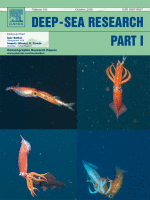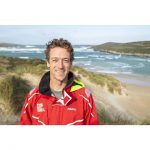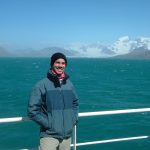Multi-Scale Oceanographic Numerical Modelling in Support of Regional Marine Science
Project Overview
Particles, including larvae, microplastics and contaminants, are suspended in the water and drift at the mercy of these currents. The ocean is a tremendously complex environment, however; currents arise from a myriad of forcing mechanisms such as tides, wind, sea surface elevation and internal density differences that each evolve at different timescales. As these flows interact with topography, the currents become even more complex at progressively smaller scales. Added complexity arises through natural global climate patterns such as the El Nino Southern Oscillation (ENSO) and anthropogenic change. Such complexity cannot be adequately measured with in-situ instrumentation across this range of scales, demanding a different approach to understanding how the ecosystem responds to changes in the physical environment.
To bridge this barrier, we will combine oceanographic numerical models that simulate ocean conditions at progressively smaller scale. Beginning with the basin scale, we will simulate over multiple years the effects of processes that act over the whole Indian Ocean including the monsoon and Indian Ocean Dipole. Then, we will progressively ‘zoom in’ to smaller scales, from a regional Chagos Archipelagos-scale simulation to one that resolves the complexity arising from interaction of currents with individual atolls and seamounts. By combining these simulations with satellite observations, we will provide the comprehensive understanding of oceanographic conditions that underpin the conservation efforts underway throughout the Chagos Archipelago and the wider Indian Ocean.
Effective marine conservation strategies need the right tools to understand how animals respond to changes in their environment; changes in temperature of just a fraction of a degree can trigger coral bleaching, whilst top predators aggregate at small-scale features where currents are intensified and become turbulent.
Publications

Mixed Layer Heat Budget in the Mozambique Channel: Interannual Variability and Influence of Rossby Waves
Mawren, D., Hermes, J., Reason, C.J.C. (2024). Mixed layer heat budget in the Mozambique channel: Interannual variability and influence of Rossby waves. Deep Sea Research Part I.

On Relationships Between the Indonesian Throughflow and the Chlorophyll Bloom Within the Seychelles-Chagos Thermocline Ridge
Carr, M.D., Aguiar-González, B., Hermes, J., Veitch, J., Reason, C. (2024). On relationships between the Indonesian Throughflow and the chlorophyll bloom within the Seychelles-Chagos Thermocline Ridge. Progress in Oceanography.






